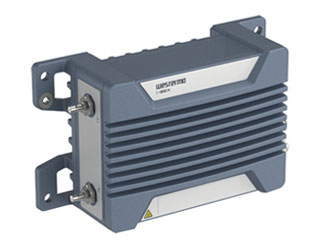Wi-Fi 6 - the next generation wireless standard
What is Wi-Fi 6?

A new, faster wireless LAN standard (802.11ax) is here to take on Wi-Fi 5. As our world is becoming increasingly connected, high-speed internet is becoming increasingly in demand, no matter where you are. The new wireless standard Wi-Fi 6 is faster, more efficient, and better able to handle high-density applications such as onboard entertainment.
Wi-Fi is a set of standards, part of the 802.11 family. When a new version of Wi-Fi is developed, the family grows. Each succeeds the previous version and each offer more. Wi-Fi 4 (802.11n) is very common in household devices, which operates on 2.4GHz and 5GHz range. Some premium routers offer Wi-Fi 5 (802.11ac), which only operates on 5GHz. Mostly commonly routers will use Wi-Fi 4 & 5 in parallel, enabling flexibility between devices.
Wi-Fi 6 (802.11ax) operates on both 2.4GHz and 5GHz and can also use 6GHz, however only on Wi-Fi 6E. Wi-Fi 6 offers more channels, and much more efficient communication with compatible end devices. Utilising both 2.4GHz and 5GHz enables low interference, high speed, and better penetration making it perfect for all your wireless needs.
We aren't talking about a one-time performance boost here; this is a long-term upgrade that will prevent our speeds from slowing down in the future.
3 benefits of Wi-Fi 6
More speed
Wi-Fi 5 has satisfied user requirements for many years, though user habits have changed. Users are expecting better service, with more devices connecting than ever before. To handle this connection type, Wi-Fi 6 introduces OFDMA (Orthogonal Frequency Division Multiple Access), which is a game changer when compared to OFDM (Orthogonal Frequency Division Multiplexing) compatible with Wi-Fi 5.

OFDM: Users are allocated a slot in time with a fixed overhead, regardless of payload
OFDM would provide each user with a time slot, and allocate frequencies to a user. This means that each user would have a fixed overhead, regardless of the load, consuming resources when other users could take advantage of them. This is primarily challenging when some users are only using small amounts of data (social media), and others want to use large amounts (video streaming, etc). OFDMA introduces a shared resource, with a flexible payload size. This resource can scale and efficiently use resources allowing all users, regardless of what they are doing, to utilise a shared Wifi service.

OFDMA: Users share the payload and resources are scaled and efficiently used
More connected devices
We have all had this moment. Great signal, but no Internet access. This is because access points that operate on older Wi-Fi standards eventually become clogged up, as they can only handle so many clients at once. As we become increasingly connected, and more and more people choose to travel by public transport, onboard connectivity is becoming an increasingly significant factor.
One of the most beneficial things about Wi-Fi 6 is that it's not about improving speeds for individual users, but rather it is about improving the network as a whole when a lot of devices are connected at the same time.
Cybersecurity
In 2021, Wi-Fi received its biggest security update in a decade, with a new security protocol called WPA3. WPA3, which succeeds WPA2, is the method of encryption used during wireless transmission. It is something used every day and ensures that you are safe whilst using Wi-Fi.
With WPA3, hackers will find it more difficult to guess passwords by brute force or conduct “man-in-the-middle”, MiTM attacks to snoop on data during transmission.
Wi-Fi 6 or 5G
It is important to note that Wi-Fi 6 and 5G are entirely different technologies: wireless LAN versus cellular. Yet they have some things in common: They both represent the most recent technological advances in their respective fields and they are both expected to coexist since they offer great collaborative potential
Conclusion
To conclude, 802.11ax, or Wi-Fi 6, is the most recent wireless networking variant that allows multiple devices to be connected to one router. The Wi-Fi 6 standard allows computer networks to accommodate and transfer large amounts of data.
The updated version represents a significant improvement over previous generations, although the differences might not be readily visible to a regular user. An important component of this technology is that it incorporates a variety of incremental improvements that eventually lead to a significant upgrade.

EN 50155 Wi-Fi 6 Access Point
IEEE802.11ax WLAN Access Point and client for on-board rail applications.
Carl de Bruin
International sales

For support inquiries, click here to contact Technical Support
